DESIGN GUIDELINES FOR
ROTATIONAL MOLDING
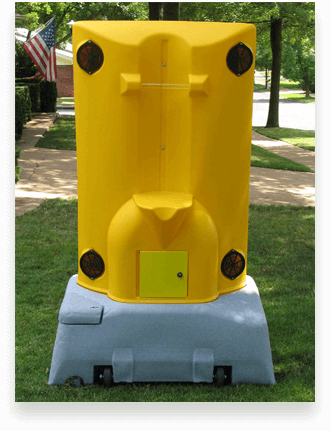

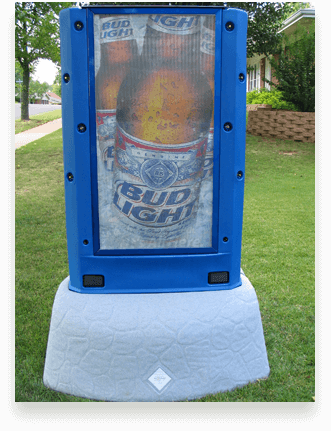
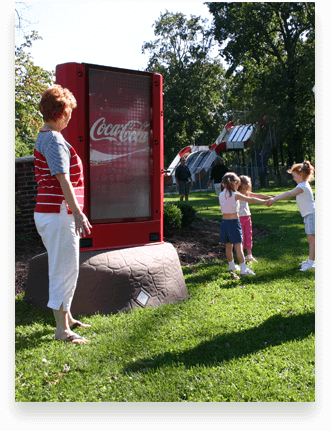

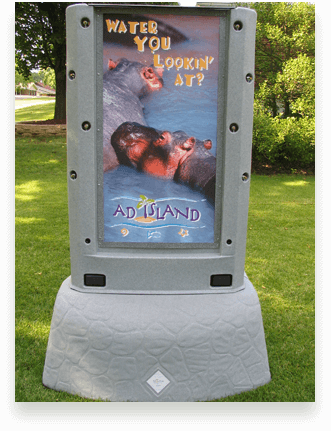
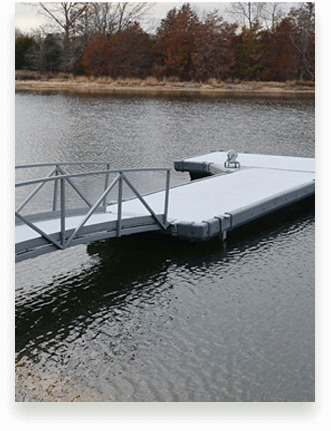
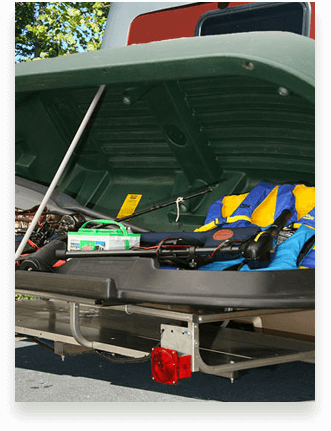


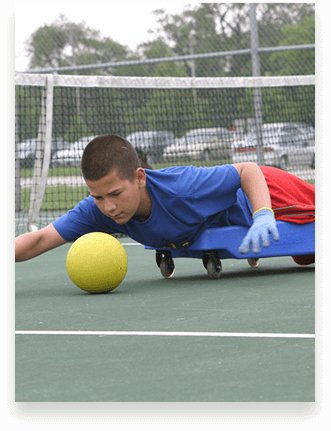
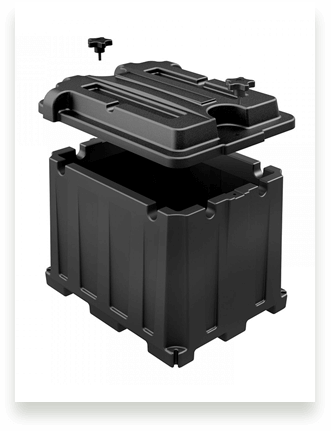
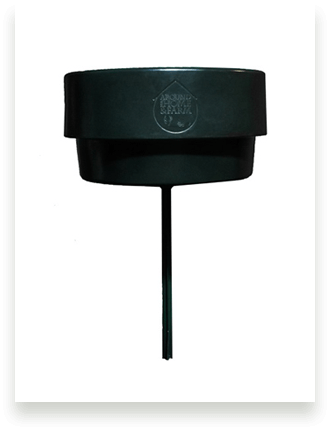
Parting Lines
When designing your product keep in mind how the mold will open and close around the product. The least expensive, least maintenance mold has two pieces. If your product will require multiple piece molds, you are increasing the chance of wear and flashing due to the operator handling and additional parting lines required. The toy industry has mastered the concept of 2-piece mold/product design, resulting in low cost tools used in high production. Two types of parting lines are predominantly used in cast molds; tongue and groove and flat with dowel pin register. Tongue and groove maintains better registration over the life of the mold. Flat and dowel may require maintenance as dowels loosen. A rule of thumb for dowel spacing on the parting line is every 6-7 inches. One of the biggest maintenance problems that molders experience is partline deterioration and flashing, the following steps will help in reducing this problem. Avoid parting line on sharp corners or along knife edges, always add a radius. Avoid vertical parting lines. Multiple piece molds should be designed whenever possible to use slide system or hinge system to guide opening and closing of multiple piece molds, this results in less damage to part line and ease of operator performance.
Inserts & Pull Pins
Today’s products require multiple piece molds, various types of inserts (stainless, alum., brass), molded threads for caps, internal threads, caster mounting plates are molded in product. Numerous designs of insert holders and pull pins are available depending upon the specific application.
Shrinkage
Various resins have different shrinkage, .007, .025, .030, .035 in/in. Cast aluminum molds also shrink .011 in/in. The molding process can also vary these shrinkages. Restricted areas will also vary the shrinkage to some degree. The type of mold release or permanent coating will have varying shrinkage. If you are trying to create a round, it is recommended that you part around the circumference not across the round since the parting line will restrict the material shrinkage and force the part into an oblong.
Flatness & Stiffening
Since Rotationally molded products are hollow, it is difficult to ensure flatness on a product. To counteract anticipated warpage, we may add a crown to the model or reinforcing ribs to the product. Process control is imperative. Reinforcing or stiffening ribs must be designed as a hollow element similar to corrugated sheet. Good proportions for a rib are a height of 4 times the wall thickness, and a width at least five times the wall thickness. The greater the height of the rib the greater the stiffness. A rectangular vs. rounded rib will provide better stiffening. The side walls of the ribs should have draft or be tapered to avoid the part hanging up on the rib. Kiss-off or two-closely spaced walls that mold together also provide additional strength. The kiss-off area should be 2 times the wall thickness plus .030 as a starting point, although this can vary. However kiss-off or (wall to wall support) may cause surface deformation, in many applications kiss-off or wall to wall support may not contact each other and still achieve the support needed.
Radiuses & Angles
Due to nature of how the material flows and forms, sharp corners usually result in blow holes and porosity in the corners. Adding a generous radius improves the molding of corners and distributes the stress over a broader area adding to the product’s strength. The minimum recommended angle at the corner of a part for polyethylene and PVC is 30°, nylon is 20°, polycarbonate is 45°. Corner angles less than these amounts can result in a bridging of plastic, increased porosity and excessive shrinkage.
Draft Angles
Incorporating draft angles perpendicular to the parting line, will reduce warpage when demolding a product in areas where the product shrinks against/around the mold. For example, if you are molding a donut shape. The outer diameter will shrink in free of the mold wall. The inner diameter will shrink against the mold requiring draft angles here.
Venting
Due to gasses that are expelled when the resin cures, a vent hole is required in all molds and therefore products. The size of the vent is dependent upon the volume of the cavity. Formula to determine vent size is 1/2″ i.d.. vent for every cubic yard of volume. Multiple vent holes may be required for larger, more complex parts.
Double Wall Products
For material to flow and form properly, it is recommended that the distance between the parallel walls be a minimum of five times the nominal wall thickness of the part
Wall Thickness
Uniform wall thickness products is one of the inherent benefits of the Rotational molding process if all areas of the mold achieve uniform heating. Basically the hotter the inside surface of the mold gets the more material will form in that area. Therefore shielded areas and deep cores will reduce the amount of heat that are gets resulting in thinner walls in those areas. Steps must be incorporated in the mold design to ensure even wall thickness. Through the use of air amplifiers, preheating molds, black paint, heat fins and pins, and protherm, the molder can actually control the product wall thickness to achieve different wall thickness as required by a specific product design.
Loading
Material is usually loaded into the mold cavity when the mold is open. If there is not enough room to load material with the mold open, a fill port can be added. The fill port enables the operator to load the mold when closed. If there is still not enough room for material, a drop box can be added to provide a second or additional charge of material during the cycle.
Drop Boxes
Are primarily used to mold multiple layers of material to provide insulation, strength, multiple colors, foaming, and/or differing internal/external part requirements. The drop box usually mounts on the outside of the mold and holds a second charge of material. After the first charge inside the mold cavity has formed, an air actuated cylinder inside the drop box releases the second charge into the mold. A second drop box can be added to produce products with 3 layers of material such as PE skin – foam – PE skin.
On Overview of the Rotational Molding Process
Rotational molding is a process whereby a hollow mold is filled with a powder resin and then rotated bi-axially in an oven until the resin coats the inside of the mold and cures. The mold is then cooled and the part removed. There are many advantages to this process. A primary advantage over other processes is size, some of the largest ovens now incorporate a 5.5m swing. Entire boat hulls and automobile bodies are being rotomolded in one piece. On the small part end, many small PVC parts such as ear syringes and face masks are rotationally molded. Another advantage is unrestricted design. Complex geometry is easily to incorporate into a one-piece product design. The application of solid modeling and CNC tools enables the molder to produce virtually any design. Rotational molding is a very cost effective method of redesigning four or five thermoformed or sheet metal pieces into one hollow plastic product. Rotationally molded products are recognized for their strength and durability. In this no-stress process, material tends to collect in corners and ribs making these areas thicker and thus stronger. The material does not thin out in corners as with other processes. Finally, ease in prototyping. One of the reasons that Rotational molding is a cost effective alternative to other processes is the low cost of the tooling used in this process. Since Rotational molding is a stress free process, tools are primarily a thin hollow shell and can be produced from aluminum, stainless steel, mild steel and nickel. The product forms on the inside of the mold therefore tools do not require internal cores. Tooling can be produced quickly and relatively inexpensively to other processes.
The Types of Molds Used In The Rotational Molding Process
There are three different types of tooling most commonly used in Rotational molding – Cast Aluminum, CNC Machined Aluminum, Electroformed & Fabricated Sheet Metal. Each type of tooling has it’s own benefits and product design parameters.
Cast Aluminum Molds
Cast aluminum molds are one of the predominant molds used in the Rotational molding process. Cast molds can produce products with complex shapes, curves and intricate detail from very small products such as a ear bulb syringe to a 400 gal. water storage tank. The majority of the Rotationally molded products made today are produced from cast aluminum molds. Product Appearance: cast molds pick up fine detail, faithfully reproducing the original pattern. Wherever a good product appearance is required, cast molds are predominantly used. Repeatability: a foundry set-up can produce multiple molds providing consistency from mold to mold…product to product. Heat transfer: the alloy predominantly used for cast rotational molds is 356 aluminum which offers the best heat transfer, strength, and malleability. Malleability: the malleability of the alloy allows for ease in texturing and/or polishing the molds and easily revising the tool when called for by product design changes. Wall Thickness: usually 1/4″ or 3/8″. Design Flexibility: multiple piece molds allow for undercuts and complex shapes. Cost: Cast molds are usually less expensive than CNC machined or electro-formed molds. Cast mold tolerances are typically. Cast Molds: ± 0.005 in/in, although tolerance may vary for small dimensions ± 0.030″. Typical lead-times for cast tooling are 1-2 weeks for the pattern and 6 weeks for the mold for a small to medium sized product.
The Production of Cast Aluminum Molds
Engineered Drawings or Electronic Data:
- Model
- Inspection
- Engineering
- Pattern
- Foundry
- Finishing & Texturing
- Machine
- Assembly
- Permanent Coating
Engineered Drawings or Electronic Data
The process begins with a product design normally communicated through engineereddrawings or electronic data. We have the ability to translate an IGES or DXF file from virtually any source. This file can be sent to us via modem or e-mail. We work with both 2-D and 3-D drawings. From this information, we can provide an estimate of the tool cost and make design recommendations to improve product moldability and reduce initial tooling cost and long-term maintenance.
Model – types, production & inspection
While the tool is being designed, a high tolerance model is manufactured. The model is an exact replica of the finished part – only slightly larger to accommodate the shrinkage in aluminum and plastic that will take place. Since there are many variables in rotational molding that contribute to varying tolerances, it is essential that the model be accurate. We offer a wide range of model types, which include CNC machined wood and plastic, and other composite materials, such as renwood and renshape. Regardless of the type of model that you choose, every dimension on the model will be inspected by our Coordinate measuring equipment, documented and sent to the customer for review before production begins.
Engineering
Before production begins, each mold and spider is individually pre-engineered with an eye toward potential molding problems. Our engineers use the latest CAD technology to ensure oven fit, airflow, check for undercuts, deep core areas, and places where the mold may incur heavy wear and tear. Special attention given to ease of operation. Clamps and inserts are made easily accessible, and the molds are designed to assure safe operation, while minimizing scrap and downtime.
Pattern
Most rotational mold makers use urethane rubber tooling. Some of the benefits of using a urethane tooling are:
- Reduced mismatch on the parting line.
- The ability to form under-cuts in the mold.
- Certain changes in design can be made very quickly.
Foundry
The foundry process is where key steps are utilized to create top quality castings. Each foundry step is carefully monitored. Daily tests are taken of the sands, aluminum, and chemicals that we use. Mos rotational mold makers keep the actual process confidential so that they can maintain a competitive edge.
Finishing & Texturing
Completing the mold with special textures will enhance the final product from blasting and texturing to applying a variety of finishes to molds.
Machining
Machining allows for inserts and pull pins and custom machined parts required by product design. Also able to produce aluminum molds using alloy and machined by CNC process.
Assembly
Once the mold is complete, it is important that is be mounted on a top quality spider or frame to maintain the dimensional stability of the mold, protect the molds and parting lines, and provide adequate clamping and shutoff.
Permanent Coatings
Permanent coatings provide permanent release and can achieve a variety of finishes on your product from high gloss to matte depending upon the permanent coating selected.
Mold Combinations
Single Cavity Molds – Single cavity molds produce one part from each tool.
Back to Back Molds – Also known as “head to head”, usually produce one hollow part which can be cut into two products.
Multi-Cavity Molds – can produce multiple hollow parts.